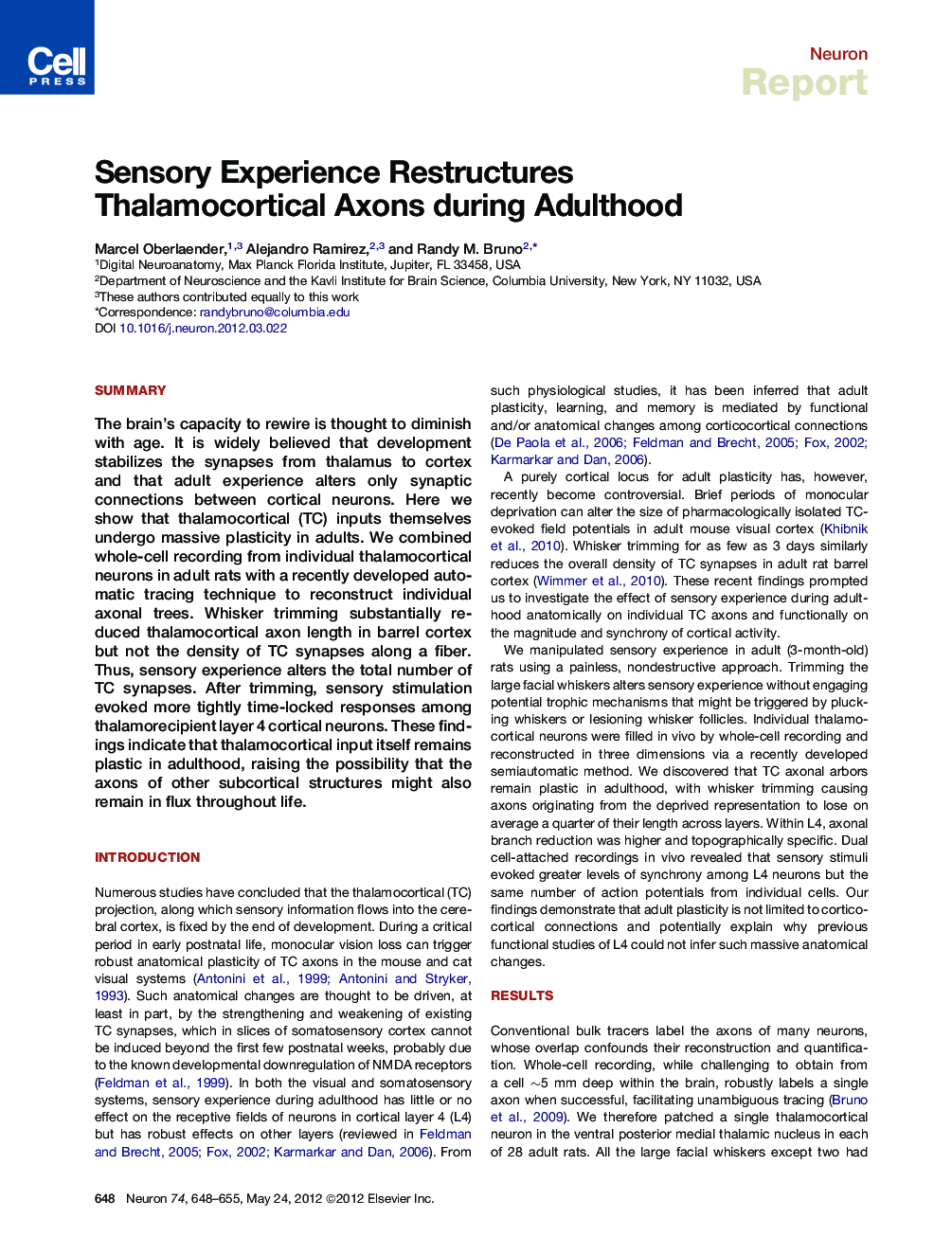| Article ID | Journal | Published Year | Pages | File Type |
|---|---|---|---|---|
| 4321802 | Neuron | 2012 | 8 Pages |
SummaryThe brain's capacity to rewire is thought to diminish with age. It is widely believed that development stabilizes the synapses from thalamus to cortex and that adult experience alters only synaptic connections between cortical neurons. Here we show that thalamocortical (TC) inputs themselves undergo massive plasticity in adults. We combined whole-cell recording from individual thalamocortical neurons in adult rats with a recently developed automatic tracing technique to reconstruct individual axonal trees. Whisker trimming substantially reduced thalamocortical axon length in barrel cortex but not the density of TC synapses along a fiber. Thus, sensory experience alters the total number of TC synapses. After trimming, sensory stimulation evoked more tightly time-locked responses among thalamorecipient layer 4 cortical neurons. These findings indicate that thalamocortical input itself remains plastic in adulthood, raising the possibility that the axons of other subcortical structures might also remain in flux throughout life.
► Thalamocortical axons undergo anatomical plasticity during adulthood ► Trimming a whisker reduces total axonal length and synapse number by 25% ► Within L4, axonal branch reduction is higher and topographically specific ► Trimming enhances L4 synchrony but does not change the number of APs discharged
